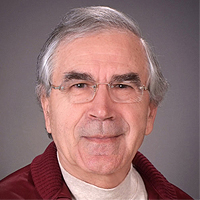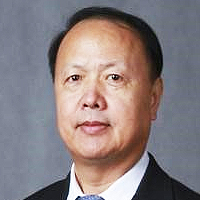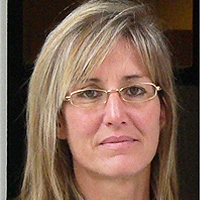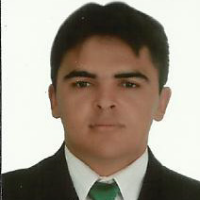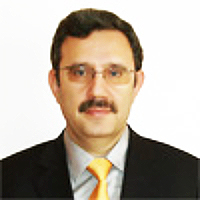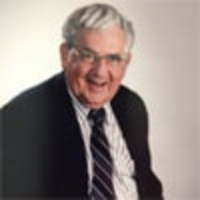Evaluation of Horizontal Lip Position in Adults with Different Skeletal Patterns: A Cephalometric Study
Published on: 10th March, 2017
Aim: To evaluate sexual dimorphism in horizontal lip position in adults with different skeletal patterns.
Material and Methods: The sample comprised of 120 patients (Females 18 years and above, Males 21 years and above) with no history of previous orthodontic treatment or functional jaw orthopaedic treatment. They were divided into different groups based on the ANB angle and gender. Group I and II included 30 males and 30 females with skeletal class I malocclusion (ANB 0-4 degree). Group III and IV included 30 males and 30 females with skeletal class II malocclusion respectively (ANB above 4 degree).
Results: When comparison between males and females (Class I+Class II) was done S-line (p<0.001), B-line (p<0.001), E-line (p<0.001), Holdaways angle (p<0.001) and Merrifield angle (p<0.001) were found to be statistically significant. S-line (p<0.001), E-line (p<0.001) and Holdaways angle (p<0.001) were found to be statistically significant when comparison was done between males and females (Class I). When comparison was done between males and females (Class II) only Holdaways angle (p<0.001) showed a significant statistical difference.
Conclusion: Sexual dimorphism was found in various lip parameters. Significant amount of differences were found between Class I and Class II (male and female) subjects.
Corticotomy facilitated correction of skeletal class II malocclusion
Published on: 26th October, 2017
OCLC Number/Unique Identifier: 7379412270
Selective alveolar decortication and periodontal augmentation with a bone graft were the two procedures used for the correction of the skeletal class II malocclusion in the case reported. A 25-year-old male patient presented with a skeletal class II malocclusion with increased bi-maxillary dento-alveolar protrusion, increased overjet, deep bite and imbricated and rotated mandibular incisors with bilateral presence of supernumerary teeth in the maxillary right and left premolar regions. Extraction of supernumerary in the maxillary right and left premolar region, and impacted UL5 was done. Pre-adjusted edgewise appliance, Roth’s prescription (0.022x0.028-inch slot), was bonded and a week later full thickness labial and lingual flaps were reflected in the maxillary and mandibular arches. Circumscribed corticotomy cuts was done and subsequently augmented with a bone graft. Orthodontic treatment was commenced immediately after surgery and orthodontic adjustments were performed every 2 weeks. The entire orthodontic treatment was completed in 9 months. Regional acceleratory phenomenon, triggered by the alveolar decortication, was responsible for the rapid correction of the malocclusion and the augmentation with the bone graft provided adequate bone volume for housing the teeth, thereby decreasing the possibility of subsequent relapse.
Fixed functional Appliances in Orthodontics-A review
Published on: 10th January, 2018
OCLC Number/Unique Identifier: 7379415494
Correcting class II malocclusion has always challenged an orthodontist owing to the complex and multifactorial aetiology. Age of patient and selection of the appliance plays an important role in the outcome of the treatment. Growth modification using functional appliances achieves stable results in class II patients. An orthodontist has wide variety of fixed and removable appliances for addressing a class II malocclusion. In this review article an attempt has been made to compile various available fixed functional appliances.
How Condylar modifications occurs
Published on: 31st December, 2018
OCLC Number/Unique Identifier: 8049485637
Functional appliances used in correction of class II malocclusions are shown to modify the neuromuscular environment of dentition & associated bones. There are many studies related to the skeletal, dental and neuromuscular changes which are evaluated cephalometrically, clinically as well as with the recent diagnostic aids like MRI. The aim of this short communication was to highlight and discuss the different aspects of condylar modifications and its role in its growth.
The Twin Block has higher effectiveness & comfort as compared to other removable functional appliances [1.2]. The action of Twin Block & Bionator is for 24 hours so effects are more with these appliances. Over the years, several theories have emerged attempting to shed light on condylar growth. One of the earliest theories, the genetic theory, suggests the condyle is under strong genetic control like an epiphysis that causes the entire mandible to grow downward and forward. Although this may be related more to development of the prenatal than postnatal condyle, the theory does indirectly question the effectiveness of orthopedic appliances in condylar growth as proposed by Brodie [3,4]. Several long-term investigations actually showed clinically insignificant condylar growth modification after continuous mandibular advancement with a reasonable retention period in human beings although the initial treatment results appeared encouraging. This leads to the conclusion that the general growth of the condyle appears relatively unalterable in long-term studies.
A second hypothesis based on the earliest available acute and blind EMG monitoring technique, suggests that hyperactivity of the lateral pterygoid muscles (LPM) promotes condylar growth. Rees reported that other muscles and tendons, including those of the deep masseter and temporalis, also attach to the articular disk region. Attachments of the LPM to the condylar head or articular disk may be expected to cause condylar growth, but anatomic research has not found evidence that significant attachments actually exist [5,6]. The LPM tendon is observed attaching, however, to the anterior border of the fibrous capsule that in turn attaches to the fibrocartilage of the condylar head and neck anteriorly. At the same time, it is doubtful that initial hyperactivity could occur where the LPM muscle has been shortened by continuous mandibular displacement therapy. By using LPM myectomy in rats, which may have disrupted condylar blood supply, Whetten and Johnston found little evidence that LPM traction had any pronounced effect on condylar growth. More recently, permanently implanted longitudinal muscle monitoring techniques have found that the condylar growth is actually related to decrease postural and functional LPM activity. This notion was also supported in human studies by Auf der Maur, Pancherz and Anehus- Pancherz, and Ingervall and Bitsanis that reported decreased muscle activity. The LPM hyperactivity theory brought forward by Charlier et al. Petrovic, and later espoused by McNamara however, was important in prompting further investigations in muscle-bone interactions [7,8].
A third hypothesis, the functional matrix theory, postulates the principal control of bone growth is not the bone itself, but rather the growth of soft tissues directly associated with it. Although this was supported in part by investigations testing the different growth and developmental responses between the condyle and epiphysis, there has been no explanation as to exactly how condylar growth would be stimulated. Thus, this theory’s validity has been questioned. One of the reasons was that there was little explanation of the specific mechanism by which the condyle was stimulated to grow. Endow and Hans presented an excellent overall perspective suggesting that mandibular growth is a composite of regional forces and functional agents of growth control that interact in response to specific extra-condylar activating signals [9,10].

